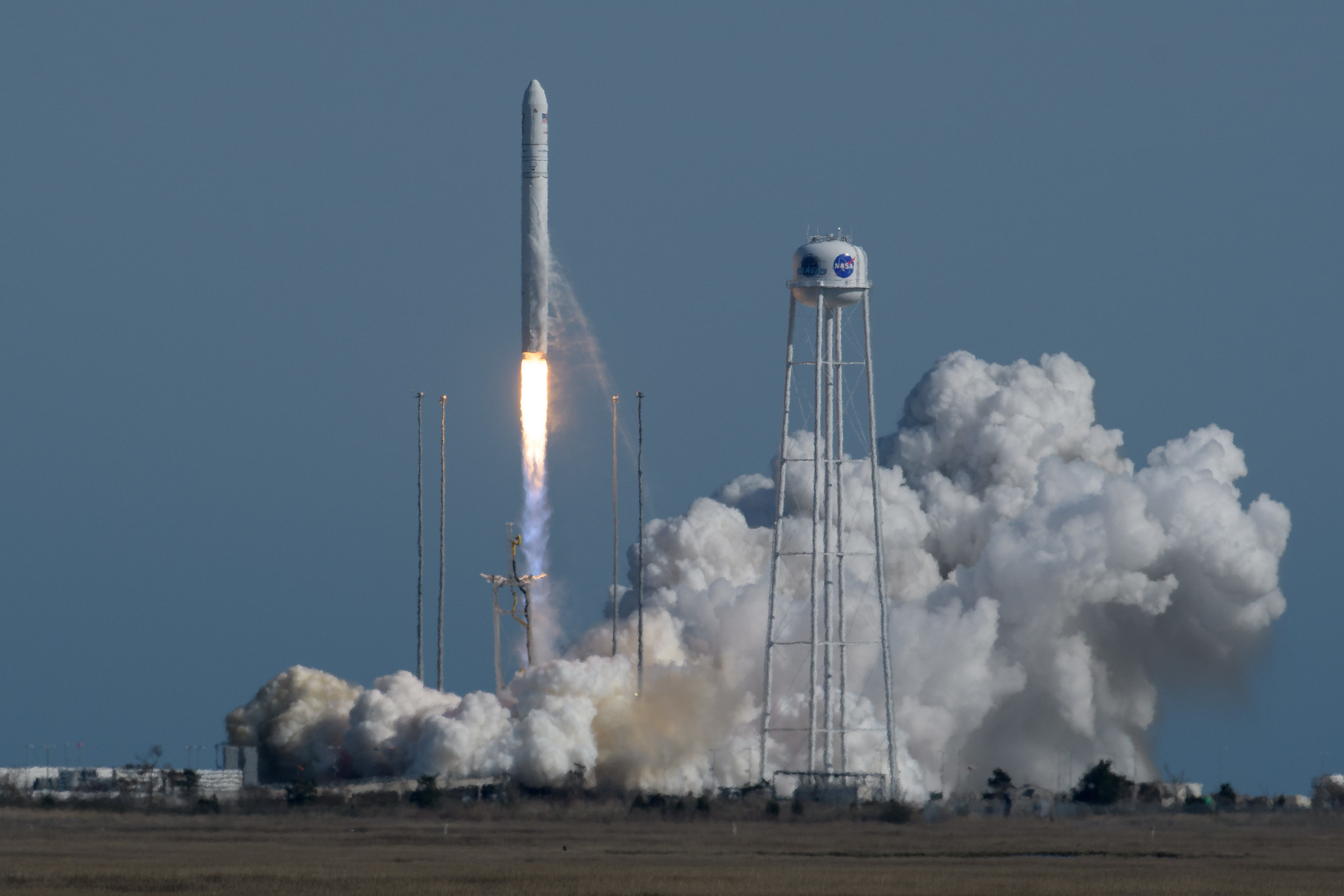Cygnus Cargo Spaceship Makes Easter Delivery to International Space Station
This morning, astronauts on the International Space Station successfully grappled Northrop Grumman Corp.'s Cygnus spacecraft with the station's robotic arm, snagging 7,600 lbs (3,447 kilograms) of cargo, just in time for Easter.
On April 17, the spacecraft launched on Northrop Grumman's Antares rocket from Pad-0A at the Mid-Atlantic Regional Spaceport at NASA's Wallops Flight Facility in Virginia. The mid-afternoon launch drew record-breaking crowds from the surrounding area and went off without a hitch. "The spacecraft is very healthy, it's performing very well," Frank DeMauro, vice president and general manager for space systems at Northrop Grumman, said at a post-launch news conference on April 17.
After launch, the spacecraft's solar arrays successfully deployed and began to generate power for the craft. Once the vehicle arrived at the space station, NASA astronaut Anne McClain grappled the craft with Canadarm2, the Canadian robotic arm that is attached to the station.
Related: Private Antares Rocket & Cygnus Spacecraft Explained (Infographic)

The crew will begin bringing the cargo inside and fill Cygnus with waste from the space station. Among the science experiments sent to the station are a rodent study of 40 live mice, helper-robots and wearable health sensors. According to DeMauro, no special holiday treats have been sent up for the astronauts, but there is a large variety of foods onboard — including turkey, shrimp cocktail and a plethora of desserts — that the crew can enjoy over the holiday weekend.
Cygnus carried 2,065 pounds (936 kilograms) of crew supplies, 3,459 pounds (1,569 kg) of scientific investigations, 53 pounds (24 kg) of equipment for spacewalks, 1,384 pounds (628 kg) of vehicle hardware, 10 pounds (5 kg) of computer resources, and 77 pounds (35 kg) of Northrop-Grumman hardware to the station. Of the net 7,575 pounds (3,436 kg) of cargo, 6,971 pounds (3,162 kg) is pressurized. The remaining 527 pounds (239 kg) — a NanoRacks deployer that will go on the outside of the space station — is unpressurized.
One of the latest improvements made to Cygnus, which will carry over into the second Commercial Resupply Services program (CRS-2), is the ability to change the weight of the payload relatively close to launch time. Cygnus can now accept certain cargo 24 hours before launch, which is much closer to launch time than the previous four-day cutoff for cargo to be added. These new capabilities will allow Cygnus to carry more time-sensitive cargo and experiments, and allow for last-minute changes to the payload.
Get the Space.com Newsletter
Breaking space news, the latest updates on rocket launches, skywatching events and more!
- Can You Keep Kosher or Halal in Space?
- How a Robot Arm in Space Inspired Tech for Surgery on Earth
- The International Space Station: Inside and Out (Infographic)
Follow Chelsea Gohd on Twitter @chelsea_gohd. Follow us on Twitter @Spacedotcom and on Facebook.
Join our Space Forums to keep talking space on the latest missions, night sky and more! And if you have a news tip, correction or comment, let us know at: community@space.com.

Chelsea “Foxanne” Gohd joined Space.com in 2018 and is now a Senior Writer, writing about everything from climate change to planetary science and human spaceflight in both articles and on-camera in videos. With a degree in Public Health and biological sciences, Chelsea has written and worked for institutions including the American Museum of Natural History, Scientific American, Discover Magazine Blog, Astronomy Magazine and Live Science. When not writing, editing or filming something space-y, Chelsea "Foxanne" Gohd is writing music and performing as Foxanne, even launching a song to space in 2021 with Inspiration4. You can follow her on Twitter @chelsea_gohd and @foxannemusic.









